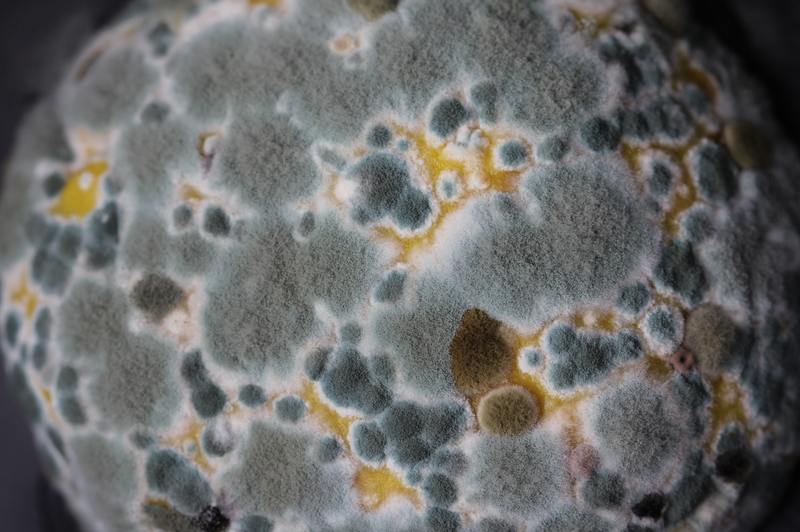Mold is a commonly faced threat in numerous households, and it’s extremely important to learn how fast does mold grow. It is dangerous because it can cause allergic responses, eye and skin irritation, and even death in severe circumstances.
You should remove the mold immediately after discovery because it can swiftly spread if left untreated. This is essential, especially for molds caused by water damage.

How Long Does Mold Take To Grow?
On average, mold starts to grow within 24 hours of humidity being put into the air. Time is necessary to watch when it comes to water damage restoration. If you wait too long before seeking professional assistance, the mold and mildew may become irreversible.
Mold spores may spread quickly and easily via the air and survive in almost any environment. It is especially common in bathrooms and basements, where there’s a lot of moisture or humidity.
Mold spores can be found in a variety of foods, including peanuts and peanut butter. It may spread rapidly and quickly establish a robust colony.
Only a few spores are required; with the appropriate conditions, mold can spread as you watch! It proliferates and spreads quickly as a result of this.
Mold is a severe health issue, and if mold is forming in your house, it should be removed as soon as possible. Mold spores can be found in dust, on countertops, and in the air within homes.
Mold may grow on nearly any indoor surface, including drywall, carpets, wallpaper, and wood. It would help if you eradicated indoor mold development since its spores might cause health problems for those who inhale them.
A surplus of water causes the problem
Water damage can take various forms, from flooding to pipe leaks to excessive humidity in the air. It doesn’t take a lot of moisture to create water damage; all it takes is a buildup of condensation on windows or an undetected drip from an under-counter pipe. By this, it gave the mold a suitable habitat to grow in.
Mold spreads quickly
Mold can only grow for a short period after water damage, usually in 24 to 48 hours. Once it does, it spreads swiftly.
Should I do it myself or hire a professional to remove mold?
If you think you can get rid of the mold on your own, keep in mind that there is a chance of contamination. Even if you use a HEPA vacuum to help lessen the risk, you will undoubtedly be exposed to mold spores when removing the mold and cleaning up.
Mold removal experts have the tools and resources to assess a mold problem and take the appropriate procedures to resolve it. While doing it yourself may appear to be the most obvious option, you should always consider hiring a professional.
As a result, for most forms of cleanup, we recommend seeking professional help.
Take note: Call emergency services immediately if your condition is severe, such as experiencing symptoms like heart palpitations or breathing problems. Do not jeopardize your safety due to a personal bias toward attempting things on your own. It is always preferable to entrust it to the professionals!
What will happen if I don’t get rid of mold?
Mold can always cause a range of health issues if left unchecked. Mold and other fungi produce mycotoxins, which are harmful to humans and pets. Headaches, lethargy, respiratory difficulties, skin irritation, and blisters are all common side effects of toxic mold exposure.
When is the best and wise time to get rid of mold?
These problems are rarely left neglected for lengthy periods since dampness and bacteria can cause severe damage. There will likely be some moisture if you detect water leaking everywhere, even around plumbing devices such as sinks or toilets.
Install a dehumidifier right away to ensure your walls don’t start growing mold and mildew too rapidly. This gadget will help remove excess moisture from the air, preventing decay from forming and expanding on those surfaces!
When making repairs, a dehumidifier is a simple approach to avoid more damage. Molds can cause respiratory difficulties in children with asthma. Therefore, preventing them is more than simply about avoiding damage to walls.
When it comes to indoor mold, where does it prefer to grow?
Wet cellulose materials are ideal for indoor mold growth. However, after the moisture problem has been resolved, mold can continue to grow.
The mold will fall dormant at this point and continue to survive in the absence of moisture. Mold will very certainly continue to eat sheetrock, ceiling tiles, wallpaper, carpet, wood, adhesives, paints, upholstery, and fabric.
Conclusion
Excess water in the home is always a headache, whether from flooding, a burst pipe, or a leaking roof. It could jeopardize the structure’s structural integrity and destroy electronics and appliances, as well as furniture, rugs, clothing, and other household belongings. We do hope we have given you all the necessary answers to your question on how fast does mold grow.
